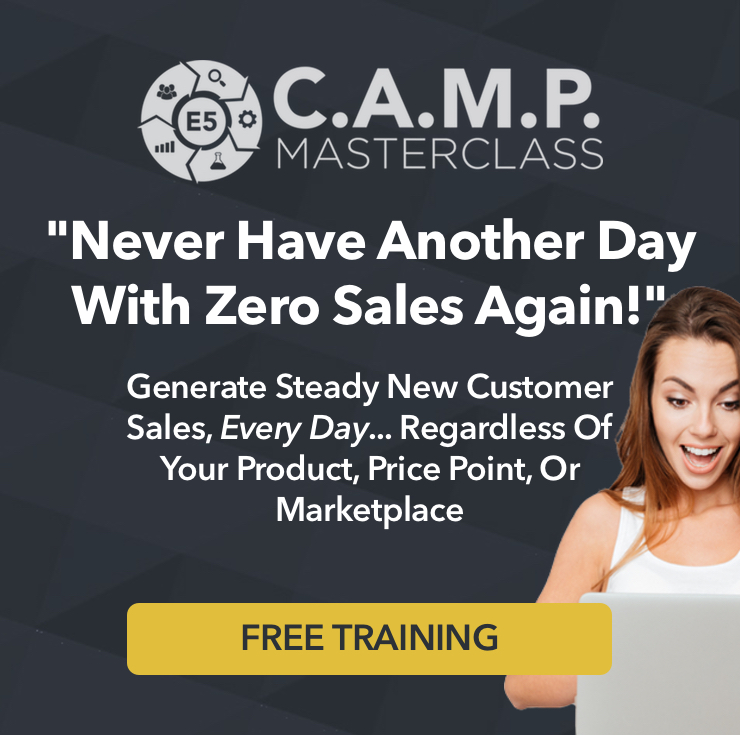Yes, it’s easier to market a $7 tripwire than a $1,500 course. But we’re not going to do things just because it’s easier.
When you have a great story and a great product, you can start your funnel with a $1,500 product. Go ahead and put it on the front end.
I know you think you should start your funnel with a tripwire. But the idea that the best marketers all use a tripwire is not true. You look at Frank Kern, Jeff Walker, Dan Kennedy, Rich Schefren, and even me. Most of the time, none of us rely on tripwires.
The only difference between marketing a tripwire and marketing a $1,500 course is that the $1,500 course requires a more complex funnel.
For example, a $1,500 course will likely require a series of videos. This allows you to get the cream off the top. For the people who don’t buy at $1500 initially, you can roll out a 6-pay payment plan.
Need answers on how to kick your funnel into high gear?
Get immediate, actionable feedback to boost your conversions with our MFA Strategists!
But don’t stop there. You still want to be able to help prospects who don’t feel like they are ready to invest that much money, so instead of the 20 hours of content, boil it down to three hours, and offer that smaller product to the unconverted leads for $497. Follow up that offer with its own payment plan.
Then have some of it transcribed and package THAT for $97.
When you have a great product and a great story, the key is to start high and go down in price.
“Then what do I pull out for the front end product?”
I know you are thinking that question. And I just want to reiterate that the front end of your funnel is not linked to price, despite what you may have been taught in the past.
The front end is an offer you present to a prospect to turn that prospect into a first-time customer and liquidate your cost of acquiring that customer.
When we were working on a funnel at one point last year, one of the guys on my team said to me, “Well, so, what’s the price point for the front end product?”
I said, “It doesn’t matter. If I can run cold traffic to a $10,000 offer, and I’m able to break even acquiring new customers, that’s a front end. It’s not about the price point, it’s about who it’s being marketed to that makes it a front end.” Whether I’m selling a $49 product or a $1,500 product, the process is the same.
The process – EBM
As you create your funnel, and you are deciding what to put on your front end, remember this: What does your prospect need to believe at the end of your marketing so they want what you’ve got, even before you tell them you’re going to offer it to them?
This is where your EBM – Education-based Marketing – comes into play. All of your content – whether it is written, aural, or visual – is designed to do one thing, and one thing only: Establish those beliefs in the mind of your prospect.
This EBM content is not only valuable to the prospect in and of itself, but the beliefs it establishes ultimately lead them to say, “You know what? Pete’s right. That’s what I need to do and that is what I need to learn. Now I just need to find out how to learn more about that!”
Then, in your marketing you segue into, “That’s why I have put together XYZ program. Let me tell you what it is, what you get with it, and what it does for you.”
Boom. Now they’re thankful. They’re grateful because you educated them about their problem, and then you offered a solution to that problem.
The difference between marketing and selling
People think there’s some magic touch, but there IS no magic touch.
Most marketers are just never taught that there’s a difference between marketing and selling. It’s why our company is not “sales funnel automation”, it’s “marketing funnel automation” because we’re marketers, first and foremost. The better our marketing is, the easier the selling process becomes.
I quote Peter Drucker all the time: “The job of marketing is to make selling superfluous.”
When you do a great job of marketing, people want the product. Then selling becomes, “Here it is. This is what you get. This is what it does for you, and this is how you can get it right now.”
Then they say, “Great. I love it. Perfect.”
Why? Because your marketing created the desire. When you finally offer it to them, they already want it because you GOT them to want it, through education. It feels valuable. It feels like you are giving them great stuff.
That’s the key, the most important piece of the puzzle. It’s strategically created educational content.
And when you do that well, it doesn’t matter what price you use for your front end offer.



